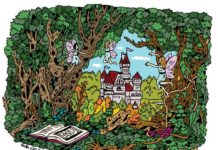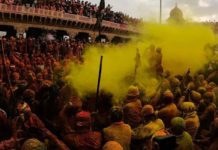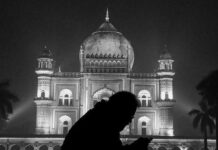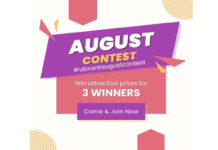There are various kinds of travelers in this world. Some like it touristy, some like urban landscapes or limited interaction with the wild. And then there are the avid nature lovers, who leave literally no stone unturned to savour Mother Nature’s bounties. Agnij Sur is one such wild life enthusiast. He puts together a wonderful piece of writing on his trip to the famous saltwater mangroves that span Bengal and Bangladesh.
Sunderbans: A Song of Land and Sea
Sunderban was on the top of my travel-bucket list. I’ve heard so much about this place and never had an opportunity to make a small trip. Winter is always a favourable time to visit this place but it is difficult to take in its essence with all the chaotic tourists; all huddling up to enjoy their Christmas and winter vacation.
The land of Mangroves (a sprawling 4265 sq. km) is approximately 109 kms from my hometown and yet, it wasn’t possible for me to arrange a trip until last December. After my semester finals ended, I packed my bag. It was high time to visit the land of myths.
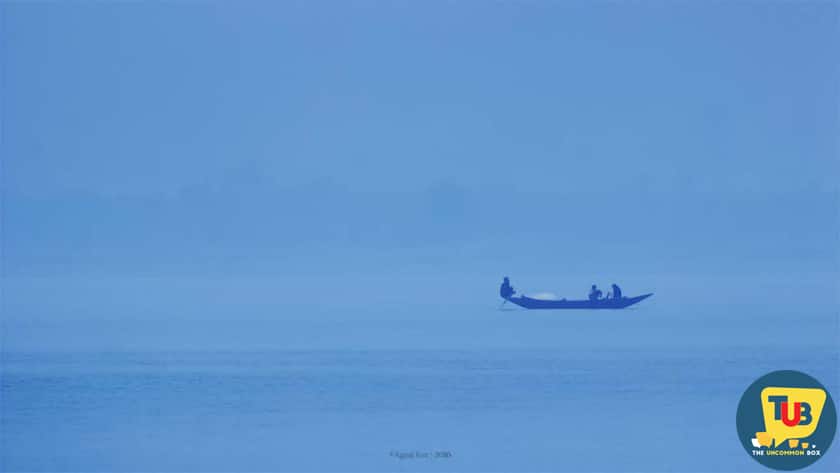
Visiting a place is always special after you have read about it;
you are already acquainted with the region, its air, water, soil. After reading several articles in various travel and wildlife conservation magazines of India, I felt like I’ve known this place for a long time; Amitav Ghosh’s The Hungry Tide adds to it. Of all the central characters from his Novel, the presence of the primordial character was felt as soon as the Mangroves started taking its shape in the horizon ablaze by the scorching sun.
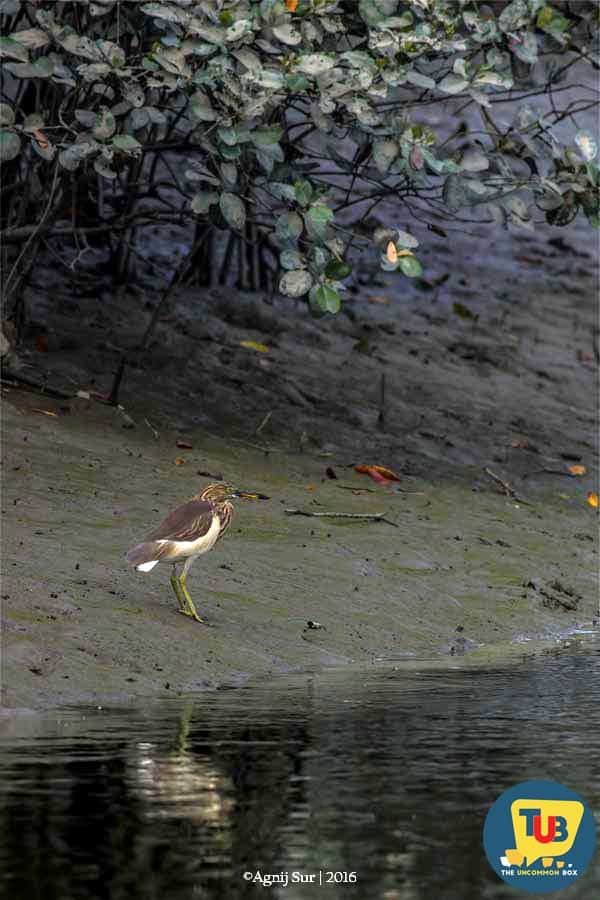
We started early in the morning, I was restless. The team arrived and we headed out towards Gosaba on a bus. Bhatiali, Baul, and Folk songs accompanied me till the end of the trip. After crossing the broad Canning River, we came to a halt near a jetty.
If you see a piece of cloth tied to the branches, just know that it is to warn others of the fate the person met in that place, a black and yellow fate.
The crippled water flowed beneath the boat without vigor; the sea was pulling it towards its fate. The water of River Hooghly meanders and breaks into channels, deposits the heavy burden of silt on its due course, creates deltas and flows until it meets the sea (Bay of Bengal), where an identity is lost forever.
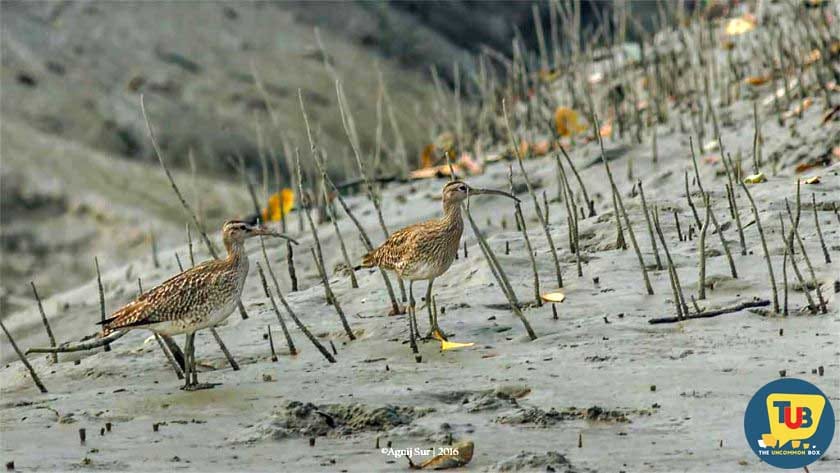
Our boat proceeded; the sun reflected on the slow water, we took shelter under the shadow of the roof. It was a dull and humid day. As the evening set in, the sky turned cyan and then pink and the muddy river swelled. The parakeets, sparrows, bee-eaters, kite and crows, the Mynahs were returning home leaving a murky sunset behind. In the horizon the bright red flag of a temple fluttered in the wind, the temple of Bonbibi.
No activity so far. My soul purpose of the trip to the land of estuaries and halophytic mangroves is wildlife, not tiger but birds. People often visit Sunderban expecting tigers and return empty-handed; I’ve seen many visitors writing articles like TIGERLESS SUNDERBANS. Tigers are one of the very elusive and majestic species of fauna found in India. The dense foliage of Hentol, Goran, Sundari, Gewa and others act like a one way window to the resident wildlife.
“You may not have seen me, but don’t be disappointed, I have seen you” – from a sign somewhere in Tadoba.
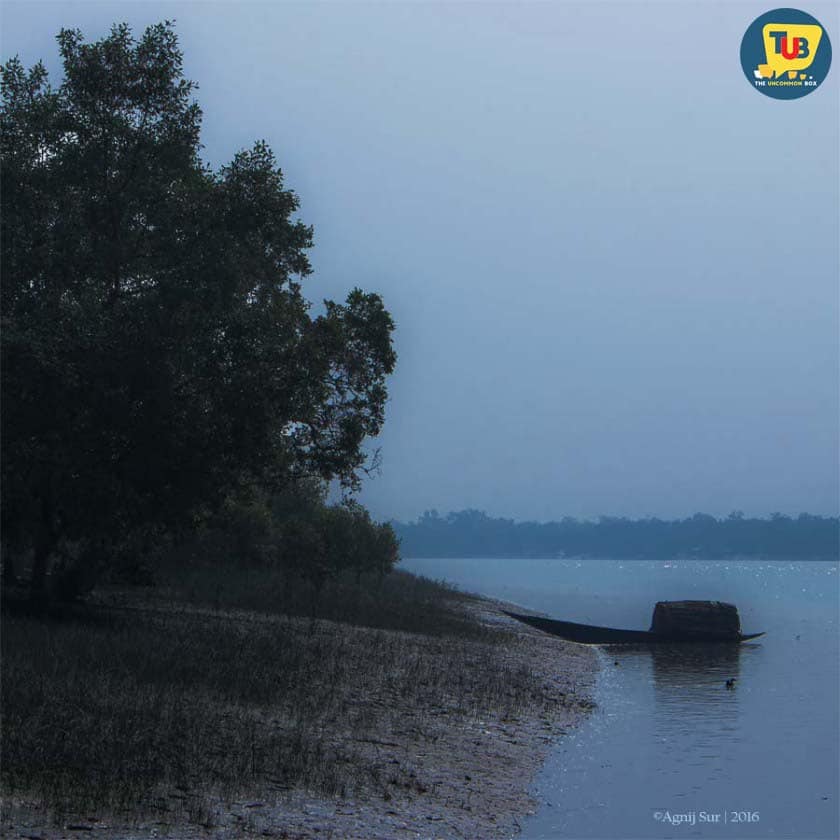
As the night fell, the crescent of the moon glowed dimly over Sunderban. We reached our destination for the day, the Sunderban Mangrove Retreat before twilight. It’s a nice and cozy resort with all the modern amenities and electricity (a necessity for charging camera batteries). Now the main thought was how to spend the evening? One way and one way only, stories on Sunderban.
Locales and tribes believe in a single deity, no other religion explicitly exists in the tide country. This unique tradition ensures communal and conservational harmony. Maa Bonbibi is the protector of the realm. Hers is the presiding “forest religion” in the mangrove delta, deeply embedded in the social and cultural mores of the villagers and passed down from generation to generation. Maa Bonbibi or Maa Bondurga is found mounted on Dakhin Rai, the dweller and the ruler of the deep forest. This bars the villagers from causing any harm to the Tigers if they find their way in the village. The forest officials encourage this relation for the sake of Conservation and Communal integrity. In the land of swamps and mangroves, there are very few options to earn your daily bread and every occupation interestingly depends on the sole provider, the green forest. Villagers collect honey and wood from the forest, fishermen cultivate prawns near the coasts and inland pools. But these entail a great risk, every single time. Tiger attack is a common event in Sunderban, be it on land or water.
Bibi bole ore dukhe,
Kumbhire na khabe toke.
Ei bate nahi daro tumi.
Kumnhirer pith pare,
Jaite Jodi bhoi kare,
Kole niya bosibo j ami.
Sunia tobe dukhe koi,
Se hoila kiser bhoi,
Thaki Jodi jononir kole,
Kahe hin kobikar,
Amon nasib kar,
Bonbibi beta jare bole|
Maa Bonbibi provides the honey collectors, woodcutters and fishermen with strength and protection from the Supreme Dakhin Rai. Be it Maa Bondurga or Maa Bonbibi Allah, this mangrove deity will inspire you with her tales and is possibly the only scientific and environment friendly religion without customs and rituals. Struggle ensures harmony, leads to dependency for the betterment of both parties leading to a greater profit.
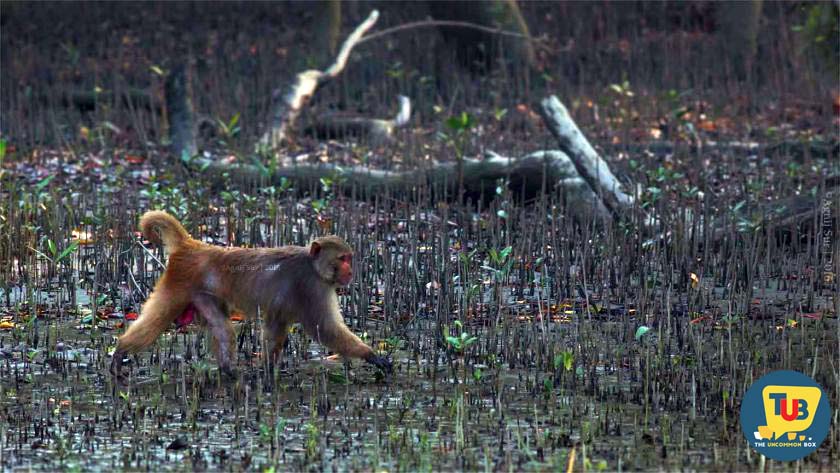
Next morning, we boarded the boat early in the dawn; the sun was rising, a layer of mist hovered over the water and hid the horizon. The calls of sunbirds, collared kingfishers were distant. We headed inside the National Park after acquiring the permission from the Forest Department. The team and I personally were excited to have Mr. Nityananda Choukidar as our guide for the day. It was special to have him on the boat, I’ve heard so much about his skills from fellow wildlife enthusiasts and Photographers like Riddhi Mukherjee, Swaroop Singha Roy, etc. I had my fingers crossed.
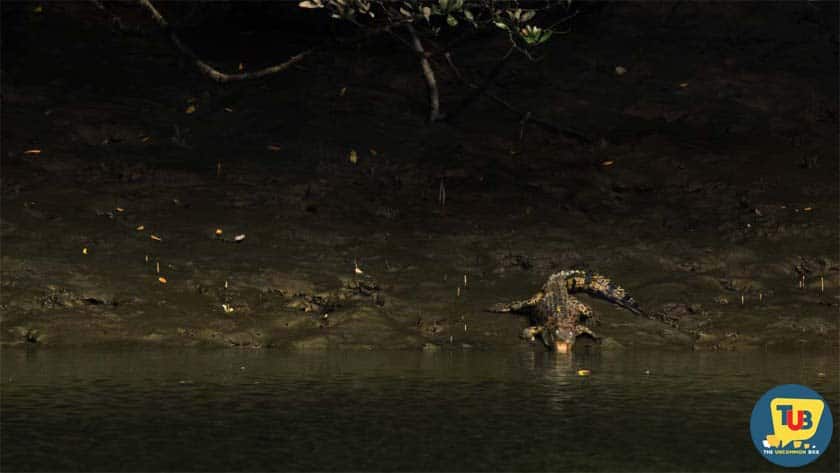
The day was successful in its own way. It was a dull day, sun peeped in from the back of the clouds for a couple of hours but the sightings and photographic opportunities went long – Kingfishers, all the species found in the swampland except the Ruddy Kingfisher, raptors like Shikra, Crested Serpent Eagle, Rhesus Macaque, Deer, and Crocodiles.
We sighted one day old pugmarks on the muddy banks of a delta. The main event was saved for the last.
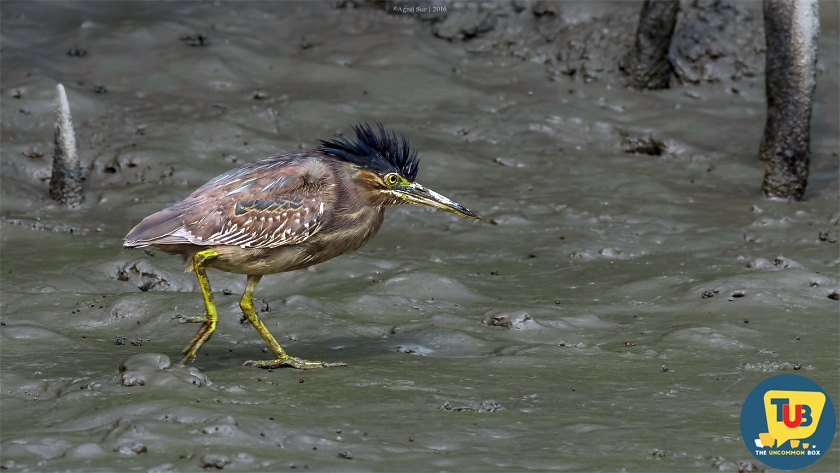
We heard a splash. A huge one. A few metres away from our boat. Monkeys were chattering, alert they were. The ripples haven’t yet died down, the surface tension has been broken. After a few seconds, it came up. A Rhesus Macaque got involved in a brawl with his troop and the alpha made him leave the territory or maybe he was from another group and was trespassing. The macaques of Mangroves has adopted to the environment and has developed a mesmerizing skill of swimming. they swim for fun, to save their life, to collect food.
[ BBC’s documentary Planet Earth’s (narrated by Sir David Attenborough) River episode is a fabulous video to watch them vaulting into water just like that. ]
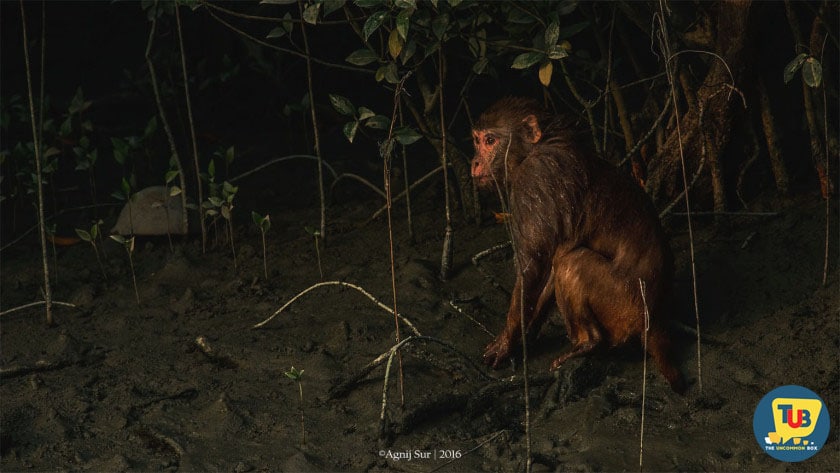
We came to an open area; three channels converge there or diverge from there. As the Red Sun was going down after a long day, the water turned pink and yellow and orange, the leaves of Hentol, Gewa, Keora, Goran reflected the falling rays and an excited Nityananda Da called on us. As we approached the bow of the boat, we saw and it left us shell-shocked, it induced fear in me and I took some steps back. It was already evening, the impressions of the paws were fresh. It might be watching us, it might have crossed the delta and is crossing the next channel of water now. We checked the other shore, the pugmarks went down in the water. As we were returning, we saw a boat of forest officials anchored near the bank of another delta; they were on the shore and was heading inside the black of the forest.
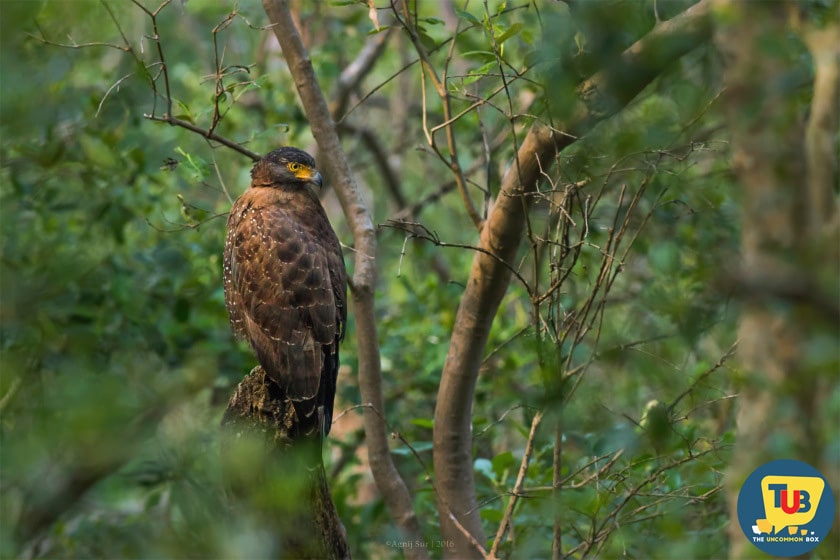
Later we heard, a tiger attacked a honey collector and killed him on that island. The time clashed with our sightings, the kill was made around 3-4pm, we saw the pugmarks a bit late. It might be the same tiger or not, but every time I reminisce the moment, I get Goosebumps.
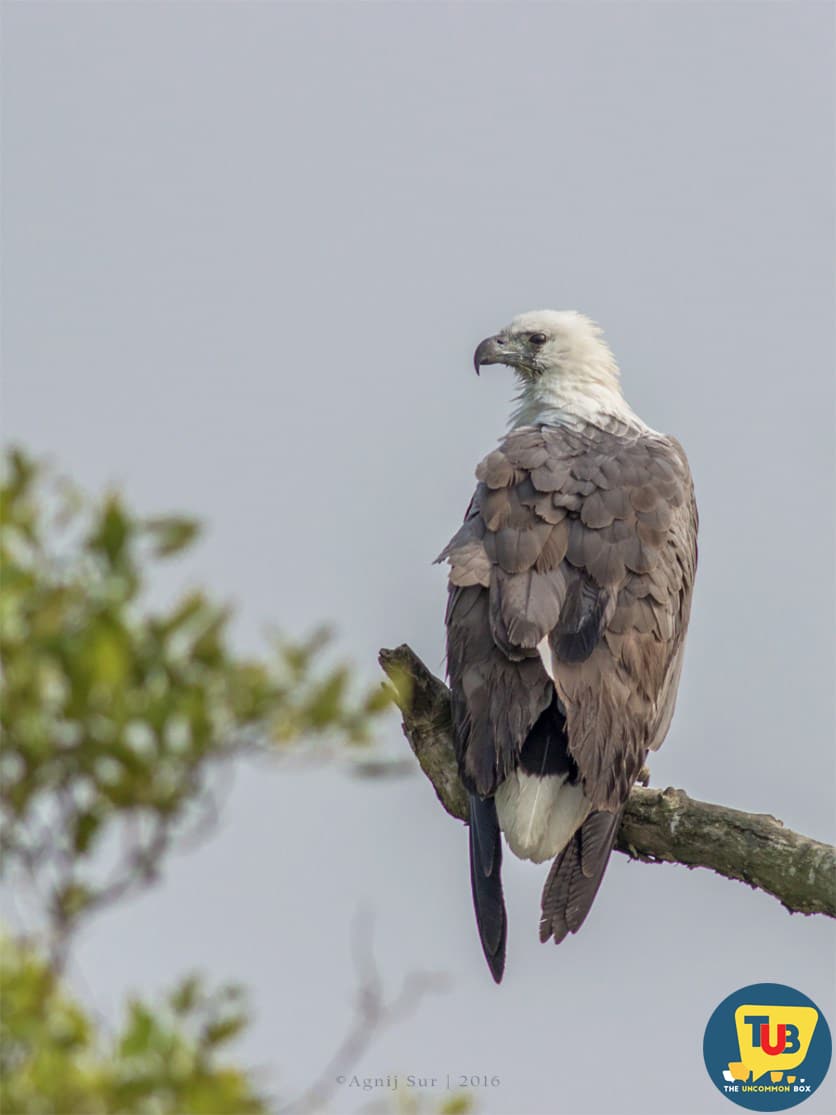
Our trip was not a long one. The next day we were ready to head back to Kolkata, to our daily life. As I hoped on the boat, a thought knocked on the door, “Will I be fortunate enough to get the glimpse of Dakhin Rai next time? Maybe, maybe not.” Who cares? Sunderban itself is a mystery. It is a song of tigers, tides and uncertainty; it is a tango of Land and Sea.’
Now wasn’t that some trip into the wild! The kind of detailing that has been incorporated in this article makes the writer’s love for Nature very evident.
Thank you Agnij for sharing your passion with The Uncommon Box!
About the author:
Currently a Third year student of Economics in Ramkrishna Mission Residential College, Narendrapur.
Agnij is a wildlife enthusiast, who wishes to bring changes in the lives of people around him. A Bibliophile and an ardent lover of good music (jazz too J ), Agnij dreams of travelling around the world or at least some places and watch both auroras in this lifetime. Visit his blog and show some of your love.
We at The Uncommon Box ardently wish his dreams may come true!
Are you a wild life enthusiast who loves taking trips into the wild? Write into us at theuncommonbox@gmail.com mentioning Trips into the Wild in the subject line. Do share this article and leave us feedback.
We encourage all kind of talented piece of work whether it’s a writeup’s, articles, poems, sketches, doodling, painting, food styling or about fashion or travelling or photography.
If you would like to exhibit your work/writeup/articles through our medium, mail us with your work or share online link/page/social media page, at theuncommonbox@gmail.com. We will review and let you know for featuring the same.
If you are on instagram follow us @TheUncommonBox where we feature work. You have to use our hashtag #TheUncommonBox for the same. You can reach us on FB too by following our page “THE UNCOMMON BOX”. and can tweet @THEUNCOMMONBOX














